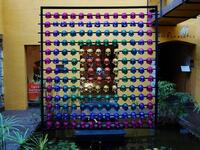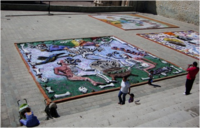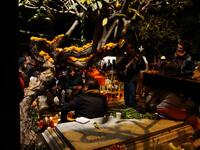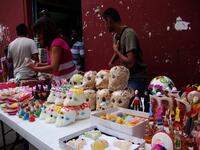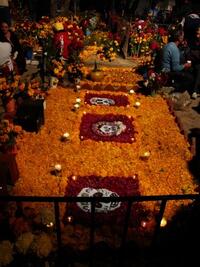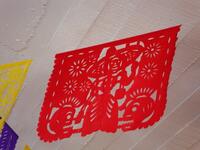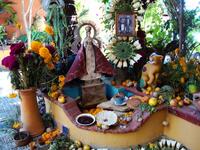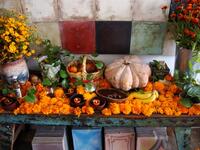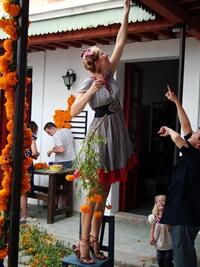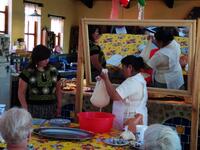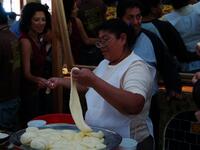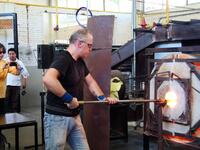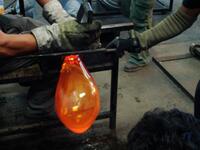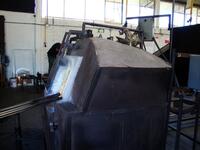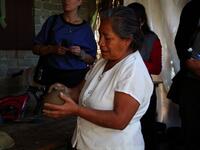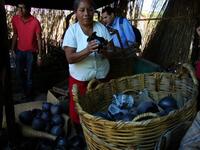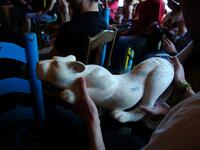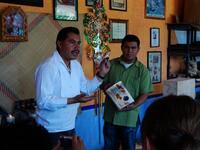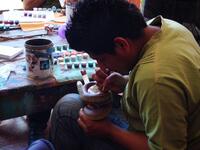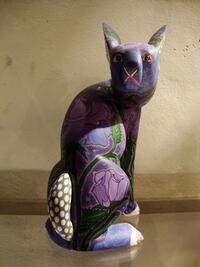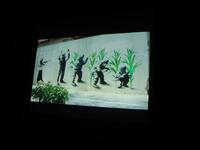EITC Blackbird
A dozen cultural transformers from Europe, collaborators in the project EITC, set out to Mexico for the kick off days and some field research. Arriving in the state of Oaxaca, in the middle of the “day of the dead” celebrations - Mexico welcomed us with flowers, candles and traditional sweets to remember the ancestors and some bottles of Mezcal 100% agave. While tasting and toasting, blackbird became the nickname for the European Mexican project on transformative culture.
On November 2nd, we started our stay with visits at graveyards, the pantheons, where we got surprised and inspired by the Oaxacan way of remembering their dead. Colourful decorations on the tombstones - flowers, candles, and tapetes - images skillfully made of died sand with glitter - give the graveyard a cheerful and friendly vibe. The dead are visited by their families who get comfortable for the party, on top of the grave, to get the dead involved in the party. Who liked music while alive, gets to listen to their favorite tunes from under the earth, on the 2nd of November. Musicians are hired to play to the dead, while friends and family are eating and drinking, dancing and singing in the graveyard.
At the house of Mauricio Cervantes, an Oaxaca based artist, we set up an altar, typically installed in homes to respect the ancestors, and make offerings of food, Mezcal and incents. Smells of fresh flowers and burning incense escape from the house altars and immerse the streets of the city making walking around a special experience.
November 3rd Seasons of the Heart http://www.seasonsofmyheart.com/ is the name of the place in Rancho Aurora, a few kilometres out of the city of Oaxaca. We were welcomed by Suzanne, a former top-chef and founder of seasons of the heart to a friendly, big room and a glass of delicious tamarind water, heard about cooking, tastes and gardening, and learned how to make the traditional Oaxacan cheese called quesillo. Legend has it that this typical regional delicacy came to be by mistake, as a young girl left at home to finish preparing cheese, was overwhelmed by sleep and forgot about the cheese. The next day, as the process had taken an unusual turn, and the massa de queso did not look right, she tried to cover up her shortcoming in front of her parents by pouring hot water on top of it. The result was a smooth, moldable lump that could be pulled into long strings. The parents liked the taste, the neighbors as well, and quesillo was invented.
At the Xaquixe glass workshop http://www.xaquixe.com/ we got an impressive show of how material can be turned to a previous stage in a cyclic process. The workshop collaborates with 4 families that collect and wash used bottles from the village. This starting material is molten at 2010 degrees Celsius, mixed with pigments, and transformed into colourful, vases, glasses, bottles, ornaments. Christian, the man of fire, who welded the furnaces for the glass workshop himself and is now the artistic director of Xaquixe, shared his concern about making the place fully sustainable, replacing the fuel for the furnaces with bio-fuel.
In the afternoon, the Hub Oaxaca hosted the Forum of Social Innovation http://huboaxaca.wordpress.com/english-blog/oaxaca-forum-on-social-innovation/ with invited lectures and a presentation of the EITC project by Robert and Geska.
November 4th The Forum for Social Innovation continues with talks featuring Lucina Jimenez and Paula Moreno Zapata, more examples of social entrepreneurs and an open space round around the topic of social innovation. The afternoon introduces 11 Oaxacan business, non profit organizations and projects in a Pecha Kucha style series of presentations.
On Saturday (5th Nov), we visited st. bartome, a black pottery village and watched dona Sylvia make a vase while telling us about the process of collecting the clay in the fields and stumping it with her feet to mix it with water to make it moldable, before shaping pots and vases without a wheel.
Afterwards, we visited st. Martin, where abajes are carved from Copal wood, and painted with natural dyes. The abajes are fantasy animals that are dreamt by the sculptor and are meant to protect and help in difficult times.
Kick-off On Monday (7th Nov) and Tuesday (8th Nov), the partners of the EITC project from Europe and Mexico introduced their backgrounds and first ideas about the various case studies, and possible collaborations to each other.
The associated Mexican partner La Piztola presented some of their work on T-shirts and walls.
part of project EITC


